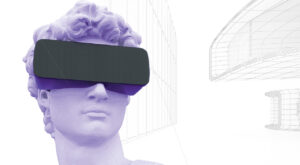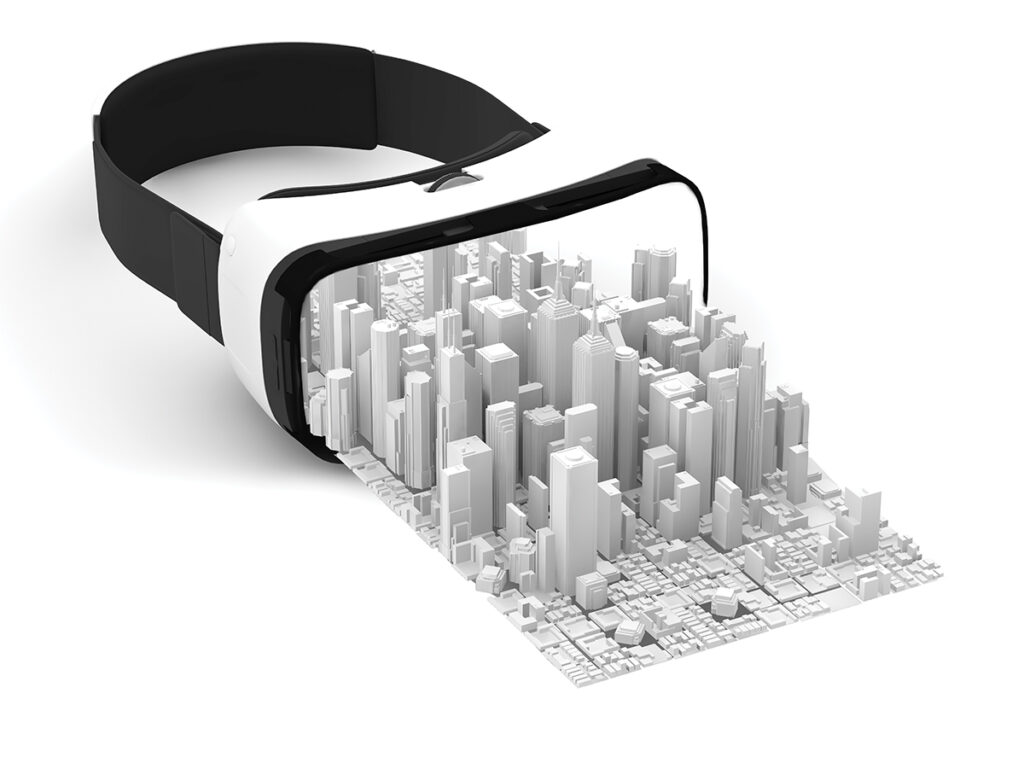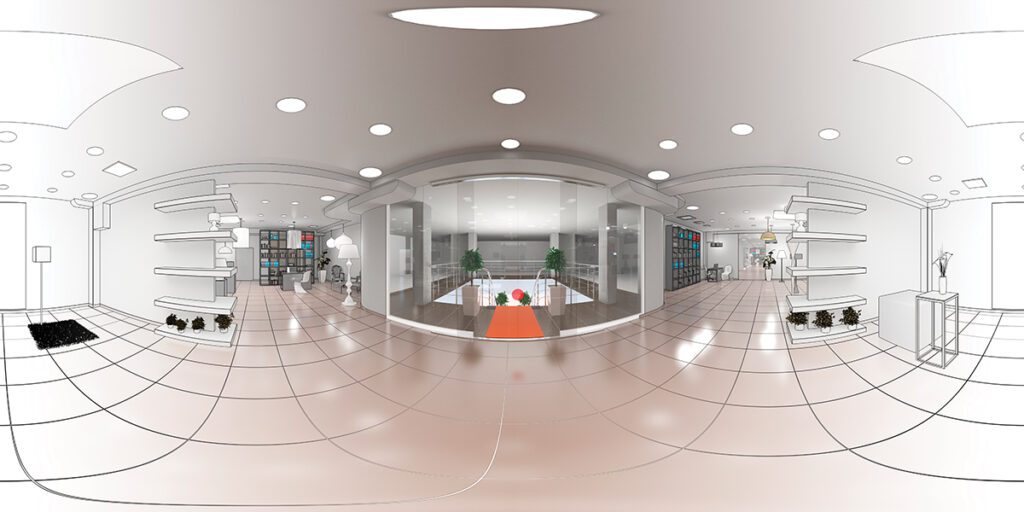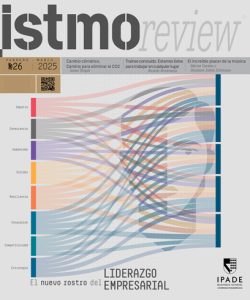New consumer trends have radically changed the rules of the game, especially those that depend on the concentration of people in a physical space. In this new context, virtual reality technologies have yet to find their full footing.
The world is constantly changing and evolving. New trends and consumer preferences have arisen and disappeared, but one thing remains constant, namely technology is increasingly relevant in the life of the consumer. Studies suggest that technology adoption accelerated the equivalent of three years due to the pandemic, as people had to migrate to different interconnective services to work remotely, make electronic purchases, take distance classes and even maintain relationships with family and friends during mandated social distancing.
It is no coincidence that, precisely in these circumstances, technology companies such as Amazon, Facebook and Alphabet have increased their stock value exponentially, due to their increased demand and people’s dependence on their services. Even social networks like TikTok have emerged and exploded in the market because they offer connection and entertainment content to the masses.
Síguenos en Google Noticias y descubre contenidos relevantes para la persona de la Alta Dirección.
Through the revolution of these changing trends, streaming industries have taken advantage; therein, subscriptions to platforms such as Netflix, Amazon Prime, Disney+ and HBO Plus have grown exponentially. However, this growth has put the film industry in a very difficult situation, forcing it to rethink its business model and design strategies so as not to depend solely on income generated by ticket sales. Other businesses that focus on the agglomeration of people face the same situation, such as music, live shows, museums and amusement parks, which all have reported losses.
These are not isolated situations. Other industries, such as tourism, gastronomy, retail, etc., continue to face the same; there, it is more difficult than ever to maintain contact and relationships with customers, forcing companies to look for ways to continue innovating their business model. They must adapt to new technological trends in the market and jump into the new normal.
Given this volatile context, one technology that has garnered much attention and market optimism is found in virtual reality (VR), which, despite being popularized in Hollywood movies for decades as the next great step in connection, is perhaps finding its moment and will finally reach the consumer masses.
Te recomendamos este webinar con el tema: «Innovación en el modelo de negocios». Juan Zamora, director general en Laboratorio Médico Polanco
MUCH MORE THAN A GAME
VR is basically the configuration of an environment generated by computer technology; it simulates a life-like environment for the user and creates the sensation of being immersed in it. This science has been on the shelves of department stores for more than 25 years, but its commercialization and use have been limited to the entertainment industry, especially video games.
Other conventional uses of VR can be found at exhibitions and art tours in museums or open spaces, when recording short films in 360 degrees, and in sensory experiences at amusement parks. However, in recent years, diverse industries have further explored the benefits of VR to mitigate risks, reduce costs and simulate crisis situations in areas such as art, construction, education, training, marketing, psychology, robotics, health, security and many others.
Even giants like Facebook (Oculus) and Sony (PlayStation VR) have been investing in VR research and development for years and are optimistic about the growth of this trend, which points to the dawn of this technology.
One technology that
has attracted market
enthusiasm is found
in virtual reality, which,
despite being popularized
for decades, is perhaps
finding its moment with
the consumer masses.
Especially during times of social distancing and changing consumer trends, many specialists in the field wonder if this technology is losing its growth opportunity. This question is not at all exaggerated since this industry is currently worth 15.8 billion dollars and has an expected annual growth rate of 21.6% from 2020 to 2027. Significant acceleration is expected in areas like education, entertainment and training.
However, currently, there are still few industry competitors, which, rather than exploring new consumer needs, are testing VR as a complement to their core business.
In this situation, assessing the advantages and capacities of technologies like VR is important for considering whether its business model must be reconsidered, using elements and components of this system and analyzing whether it is time for companies to adopt these trends.
The following contains elements to consider about VR and its implementation for current business models and companies that are in the market, and for those that want to fill a gap in consumers’ latent needs.
10 ELEMENTS THAT POINT TO THE ADOPTION OF VR
The following points are the result of research on the history of VR, including its successes, setbacks, nature, principles and technological capabilities. Combined with the current context, these findings are valuable for strategic planning in industries like entertainment and for entrepreneurs in search of new horizons.
1. The new normal is here to stay. Certain consumption habits and preferences will remain, including digitization, healthcare, social distancing. Post-crisis behavior will continue to evolve over time, making it important to understand where new trends are going.
2. The cost of the VR is going down. Despite having been on the market for more than 40 years, the development of virtual reality is still relatively expensive, given production, recording, digitization and editing. However, the latest advances suggest that these costs can be exponentially reduced and economic barriers to entry in this market are lowering.
Te recomendamos leer: Nuevas realidades al servicio de las marcas. La tecnología que todos quieren, pero no saben cómo implementar
3. Poor delineation surrounding the use of VR. One of the great mistakes made in the history of this technology corresponds to a lack of limits and definition around the scope of what it offers to industries. This means that not everything can be VR. Before applying virtual reality to industries, one must understand its functions and keep costs/benefits in mind.
4. Developers and content creators. It is important to consider that VR works like any other entertainment ecosystem, i.e., it requires creatives, producers, content creators, and distributors. It is difficult (and expensive) to try to vertically integrate the virtual reality industry, making it necessary to define where you want to compete along the value chain.
5. Creation of value for everyone involved. Related to the previous point, it is necessary to consider the economic benefit for all participants in the creation of content and ensure that it is mutual, especially since the industry is still weakly consolidated.
Technology adoption
accelerated by the equivalent
of three years due to
the pandemic, as people
were forced to migrate to different interconnection services.
6. To reach the masses, it must be affordable. In recent years, we have seen tech giants opt to offer their services for free –or freemium– to reach a mass audience. Consumers have become accustomed to not paying or paying a membership for these services. So the most efficient way to build a strong customer base is to do so cheaply.
7. Analyze history and encourage innovation. Throughout history, virtual reality has had great successes in reaching the masses and other steps have set it back entirely. It is important to understand the nature of this technology to find its limits and to devise new ways to apply related technological advances.
8. Stay on top of what the public is saying. Today, social networks are key to understanding users’ conversations, preferences and limitations. Staying on top of new trends and insights is the best way to stay relevant in such a volatile environment.
9. Emergence of hybrid models. A steep learning curve is one of the biggest difficulties that the technology industry faces because some users may not be completely convinced of the benefits that VR offers. Therefore, opting for hybrid models that offer both traditional and new elements can reduce natural resistance to change.
10. Bear in mind that the VR boom has not yet arrived. It seems that VR is still waiting for its long-awaited moment to shine; MP3 has had it, smartphones continue to shine, and streaming is building steam. The next contender could very well be virtual reality. Thus, it is important to consider that, although its projected growth curve is promising, we must not forget that it continues to pivot and launching it to the masses may be challenging. At the same time, profit is possible by becoming a pioneer and among the first to massively capitalize on this technology.
Opting for hybrid models
that offer traditional
and new elements
can lessen natural
resistance to change.
WHO WILL BE THE FIRST TO EAT A SLICE OF THE CAKE?
Although multinational companies have long been developing and adapting VR for commercialization, in reality, it is still a niche technology. However, other technologies have walked a similar path. If we look to the smart phone and touch screens, it was not until the launch of the iPhone in 2007 that the world began touching and interacting with screens, despite the fact that this technology was developed in the 1970s. Who will be the first to really massify virtual reality technology, and how will they do it? What will blue ocean opportunities look like for this market? Only time will tell if virtual reality can adapt to our new normal.
Connect with us, now on TELEGRAM: https://t.me/ISTMOconnection

